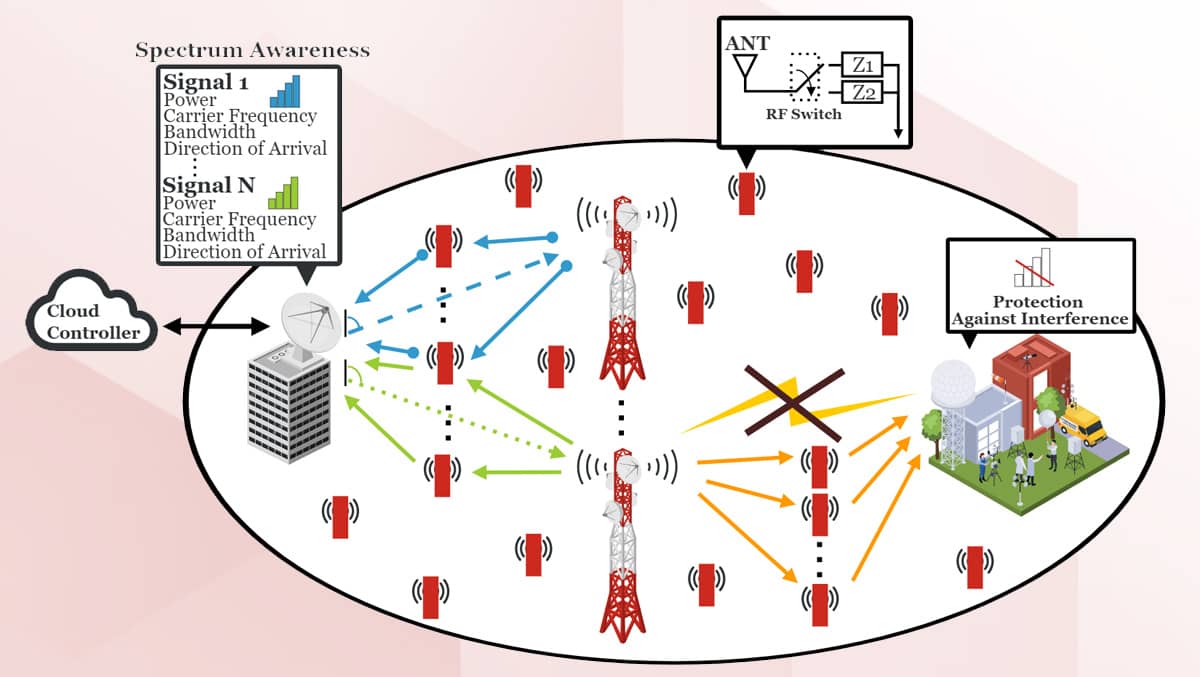
A team of WINLAB researchers led by Professor Aggelos Bletsas (PI) along with co-PIs Distinguished Professor Narayan Mandayam (Director, WINLAB) and Ivan Seskar (Chief Technologist, WINLAB), are the recipients of an award from the National Science Foundation under the Next Era of Wireless and Spectrum (NewSpectrum) program for the project “EFFICIENT: Backscatter Fabric for Multidimensional Spectrum Situational Awareness and Protection”. This three-year project funded at $800,000 addresses two emerging topics of increasing interest, namely (i) spectrum situational awareness and (ii) protection from interference.
The next era of spectrum is envisioned to have spatially and spectrally adjacent systems that are dynamic, resulting in frequent cross-system interference. Naturally, interference lies at the heart of spectrum sharing and involves a network of radio transceivers, distributed in space with varying behavior over time. Mechanisms used in the current and past eras of spectrum management, have all run up against limitations owing to the cost and potential lack of scalability of such solutions. This project addresses both spectrum situational awareness and protection from interference, exploiting ultra-low complexity radio hardware and non-coherent techniques; the basic idea lies at the heart of backscatter radio, which enables a fabric of low-complexity backscatter tags for said objectives. These tags are controlled through the receiver/gateway, connected to the cloud, without however requiring channel state information (CSI) regarding any of the involved links.
The proposed fabric offers an intelligent, yet low-cost solution with minimal hardware complexity (due to the adopted backscatter radio tags), limited channel state information (due to the proposed non-coherent algorithms), with the capacity to observe signal strength (power), frequencies and direction-of-arrival (DoA) for a set of in-band, simultaneously operating links. Such multidimensional spectrum situational awareness comes with a collateral dividend: interference protection, i.e., the ability to cancel interference at specific receiver locations. Techniques developed include both model-based, as well as data-driven machine learning (ML) approaches. In addition, this work targets demonstration of the proposed principles in the FR3 band, with a particular focus on the 12.2 − 12.7 GHz band, where next generation cellular, digital video broadcasting and low-earth orbit satellite (SAT) radio applications have the potential to coexist. The creation of the backscatter fabric will contribute to the envisioned Spectrum Era 4 and the ever-expanding problem of meeting increasing wireless data demands.
More details on the project can be found at the NSF page here.
